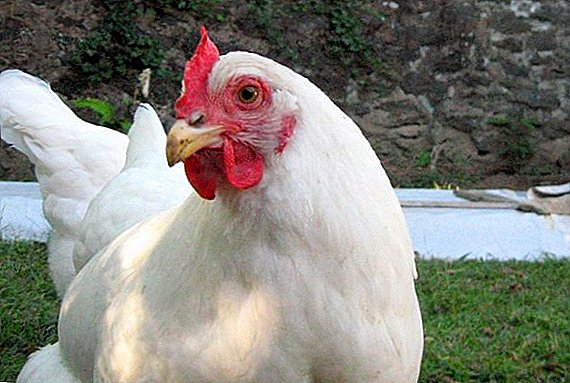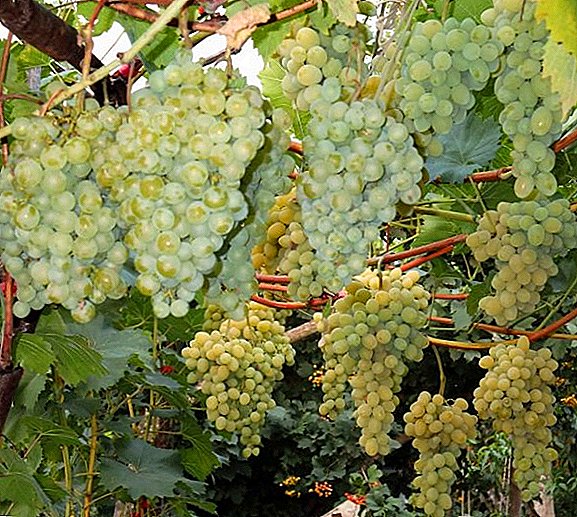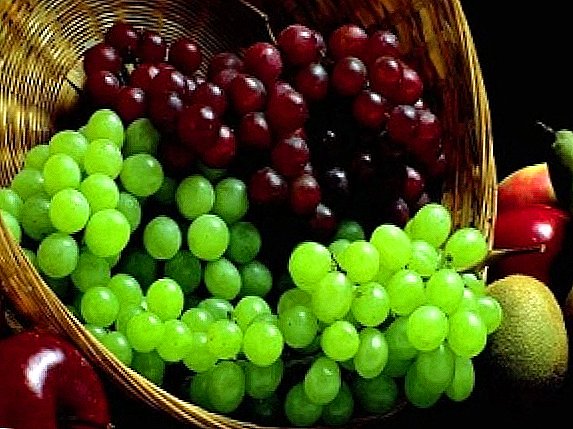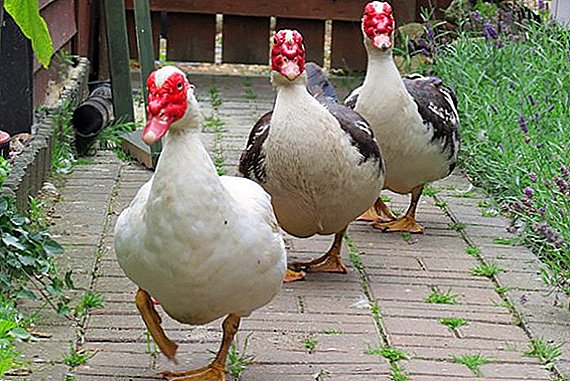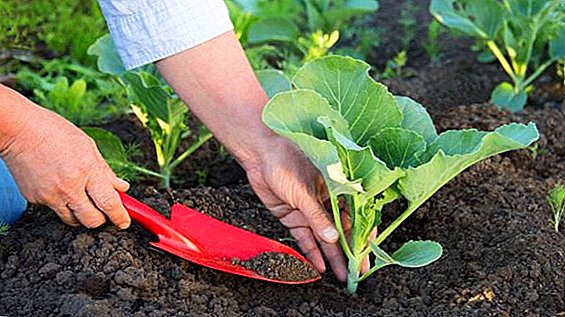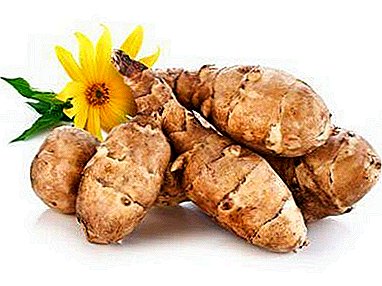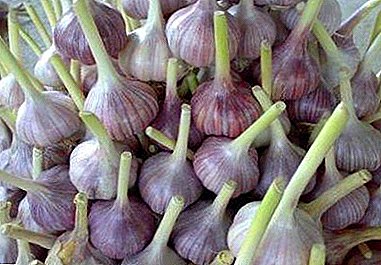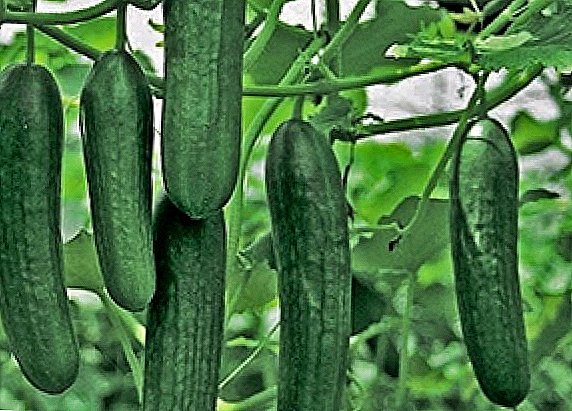
In the modern market of cucumber seeds, more and more goods appear, which is the result of the fruits of modern breeders.
Everyone is accustomed to ordinary inscriptions of the type "variety" or "hybrid." But on some sachets you can find a phrase like "Parthenocarpic hybrid", and people do not fully understand what this phrase means.
Often these new varieties of cucumbers are confused with such a long-known concept as self-pollinated varieties. But between these two varieties of cucumber culture there is a fundamental difference.
Partenocarpic cucumbers are representatives of varieties or hybrids, the fruits of which are formed without pollination at all. And in the process of developing self-pollinated cucumbers, this process is taking place.
The main purpose of such new varieties or hybrids is the cultivation of cucumbers in greenhouse conditions, that is, where there are no insect pollinators.
The following are the most famous varieties of this new variety of cucumbers.
Grade "Athena"

Hybrid. In terms of ripening is early ripening, since the interval between the first shoots and the moment when the fruits are ready for use is 40 - 45 days.
Cucumbers cornish type. Shrubs are not particularly powerful, have medium vigorous growth, generative, that is, most of the fruits are formed on the central shoot.
The leaves are medium in size. The cucumbers themselves are green, cylindrical in shape, covered with large tubercles, about 10 to 12 cm in length.
The taste of the fruit is tender, sweet, no bitterness. Perfectly maintains transportation, and also does not spoil in the second half of the vegetative period.
Remarkably showed himself not only in fresh form, but also in canned and pickled. There is a relative immunity to powdery mildew, cladosporia and peronosporosis.
Perfectly gets green film and glass greenhouses during the winter-spring period. It is better to start growing this variety from seedlings, the sowing of seeds for which it is necessary to produce in early April.
Growing seedlings of these cucumbers is not different from the same procedure for other crops. The optimum temperature for seedlings before germination will be + 25 ° С, after - + 15 ° С.
Need to regularly water and feed seedlings, so that they are strengthened before transplanting into the ground.
The best planting scheme will be 70-90x30 cm, but sometimes planted and thicker, namely placing 2 - 3 seedlings per unit area. Before planting, seedlings should be 22-25 days old.
Mandatory procedures for the successful cultivation of bushes are regular watering with warm water, preferably in the evening. It is also recommended to spend 2 - 3 feeding bushes.
This hybrid is able to withstand excessive lighting, so do not worry about the darkening of the bushes. Also, bushes safely survive elevated temperatures and insufficient air humidity.
Be sure to loosen the soil after watering, so that the roots get more oxygen. For each plant, you need to form one stem, and when staving you can not remove all side shoots, but leave a few. In this case, everything will depend on how thick the plants are.
Variety "Ecole"

The early ripe hybrid, ripens in 42 - 45 days after shoots, kornishonny type.
Bushes are compact, strong-growing, its internodes are short, the type of flowering is “bouquet”, that is, there are 4 - 5 fruits in one node. The fruits are cylindrical, with small white bumps, beautiful green color, sweet, no bitterness.
In fully mature fruits, the length reaches 6–9 cm, but small cucumbers 4–6 cm long can also be harvested for pickles.
High yield, approximately 10-12 kg per sq.m.
Perfect for marinating, as the internal density of the pulp is preserved. Suitable for inclusion in food fresh, and the fruit will look great in banks. It is not affected by powdery mildew and cladosporia infection, but the bushes and fruits can be affected by the cucumber mosaic virus.
Designed for cultivation in film shelters. It is better not to plant the seeds immediately in the ground, but to grow seedlings.
The seeds should be laid in the middle of March at a depth of 2.5 - 3 cm. The conditions for growing seedlings of this variety are ordinary, there are no changes.
Dripping seedlings should be very wide, namely 2 plants per 1 sq. M. under the scheme 140x25 cm, so that all the bushes have enough space. If planting will be carried out in open ground, then it is desirable to cover the infrequent seedlings with foil for a short time until the adaptation period ends.
Plants are very unpretentious in the care, able to withstand temperature fluctuations. Possess high stress tolerancetherefore, they recover quickly after illnesses.
There will be no particular problems with the pinching, since the side shoots on the plant develop poorly, and their number is not very large. It will be enough to regularly water the bushes, loosen the soil around them, and also feed the bushes with various fertilizers.
Also required preventive and therapeutic treatment of bushes with solutions of fungicides, colloidal solutions of sulfur, as well as copper sulphate.
It is also interesting to read about the varieties of Chinese cucumbers
Variety "Barvin"

Typical parthenocarpic hybrid. Shrubs with medium growth force, generative type, with a very developed root system. Very early, begins to bear fruit in 38 - 40 days after the first shoots.
In one node up to 3 flowers are formed. Fruits are dark green, glossy, with large tubercles, cylindrical in shape, reaching an average of 10-12 cm in length.
In taste bitterness absent. Productivity is very high, with 1 sq. M. you can collect 20 - 25 kg of fruit. Bushes bear fruit long and steadily. Well maintains transportation. Suitable for consumption in both fresh and marinated or canned form.
Shrubs and fruits are not affected by powdery mildew, cladosporiosis and downy mildew, but peronosporosis can significantly damage the crop.
It all starts with a seedling method. The growing conditions are standard, that is, room temperature, regular watering, as well as a few additional feedings of seedlings. It can be planted according to the standard scheme, namely placing 2 - 3 seedlings per unit area. Planting of seeds is carried out in the beginning-middle of March, transplanting into the greenhouse should fall in the period from the middle to the end of May.
Bushes are not particularly whimsical, so standard measures of their care will be enough. Regular watering, a few dressings and cultivation of the soil will be enough for the bushes to bear fruit and not die.
When forming bushes, not all stepchildren can be removed, but it is advisable to remove very large leaves so that the fruits receive enough sunlight.
To prevent the bushes from suffering from downy powdery mildew (peronosporosis), the bushes need to be treated 2–3 times with fungicides such as Ridomil or Kuproksat. Moreover, the treatment must be carried out at the first signs of the disease.
Sort "Cupid"

Very early hybrid, 40-45 days are enough for full ripening of fruits. Bushes are powerful, up to 8 fruits form in one node.
The cucumbers themselves are dark green, strictly cylindrical in shape, the surface is covered with small thorns. The taste of the fruit is just wonderful, not bitter, the skin of the fruit is thin.
The fruits do not turn yellow, do not spoil during transportation, despite the fact that the skin is quite thin.
Productivity is very high, on average, from 25 to 28 kg of a bush can be collected from one square meter of bed, but with proper care and good environmental conditions, the yield increases to 45 to 50 kg per square meter. The variety is resistant to powdery mildew and resuspension.
You can grow these bushes and without seedlings, but pre-prepared seedlings take root better.
Sowing seeds need to be done in early March, so that the seedlings have enough time to grow by the time of transplantation into the ground. Seedlings should be 35 to 40 days old before dropping.
Conditions for growing seedlings are common. The planting scheme is also usual, 3 seedlings can be safely dropping on one square. meter plot. Immediately after planting young bushes can be watered.
The variety is resistant to bad weather conditions, normally survives high temperatures as well as low humidity.
There are no features in the care as such; all procedures should be done according to the standard scenario. Regular watering, 2-3 times the bushes need to feed. Loosening the land is imperative that no dry crusts form on the surface, otherwise the root system of the plants will experience a lack of oxygen.
You can also tie the bushes a little bit to several supports to facilitate the harvest process.
Variety "Artist"

The early ripe hybrid, full maturing of fruits comes in 40 - 42 days after the first shoots of seedling. Bushes are very strong, powerful, with well developed roots.
In one node 6 - 8 fruits are formed. Fruits of uniform structure, dark green, cylindrical in shape, with large humps, small (8–10 cm in length, in weight reach 90–95 g).
Cucumbers do not turn yellow neither on a bed, nor after removal from bushes. Fruits easily survive transportation, do not spoil for a long time. The variety is not a cucumber mosaic virus, nor is it affected by olive spot and powdery mildew.
The yield is high and amounts to 20-25 kg per square meter of plantation.
Seedlings need to lay in the middle of March.
Conditions for seedlings should be extremely comfortable, so that the seeds should be able to germinate well and quickly. To accelerate the emergence of seedlings, seed tanks need cover with plastic wrap to create a particularly comfortable microclimate.
Watering and fertilizing seedlings should be regularly. It is also advisable to constantly change the temperature so that the seedlings are well tempered and quickly take root in the ground. These cucumbers can be grown both in the greenhouse and in the open field. But in the conditions of uncovered land, seedlings are better protected with plastic wrap, so that, for example, strong gusts of wind could not cause irreparable harm to seedlings.
This grade is very unpretentious in leaving, will be able to withstand a lack of moisture, high temperatures, an overabundance or a lack of lighting. It is undesirable to arrange interruptions in irrigation, so that the crop does not suffer. 2 - 3 fertilizing with different fertilizer complexes will improve the quality and taste of cucumbers.
Prophylactic treatments with drugs against diseases are only welcome.
Variety "Crispina"

Hybrid. Ripens very quickly, literally in 35 - 40 days. Bushes are powerful, medium leafy. The leaves are medium, saturated green.
Fruits are cylindrical, with a large number of tubercles, green, on the skin there are light stripes.
Cucumbers are quite large, in weight reach 100 - 120 g, 10 - 12 cm in length. Productivity is high, 6 - 7 kg per square meter. The taste is very good, without bitterness, the skin is very thin.
Fruits do not deteriorate during transportation, they are good fresh, pickled or canned. The powdery mildew, downy mildew and the cucumber mosaic virus cannot damage the crop.
It takes root best in greenhouses. At the stage of growing seedlings there are no special deviations from the standard procedure. Enough cover the seed containers with polyethylene, maintain a good temperature, as well as regularly water and feed the seedlings for its successful and complete germination. Transplanting into the ground should be done when the soil is already warm enough.
When planting, you can place 2 - 3 seedlings per 1 sq.m.
Shrubs varieties are not susceptible to low humidity, so there are no special changes in the procedure of care.
We need preventive treatments against diseases, regular watering and other aspects of caring for cucumber bushes. The shoots of plants of this variety can be tied to the trellis, but the bushes will still bear fruit without this procedure.
Partenocarpic cucumber varieties are perfect for those gardeners who appreciate the yield and quality of vegetables, bushes that do not require much labor and unpretentious care.


